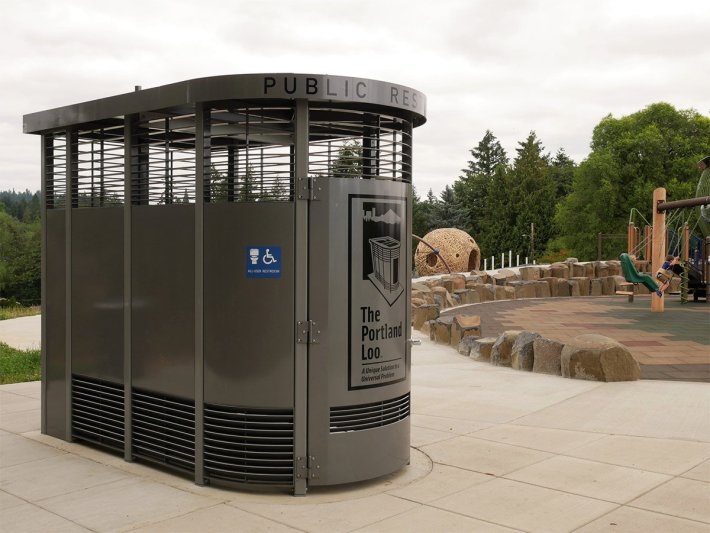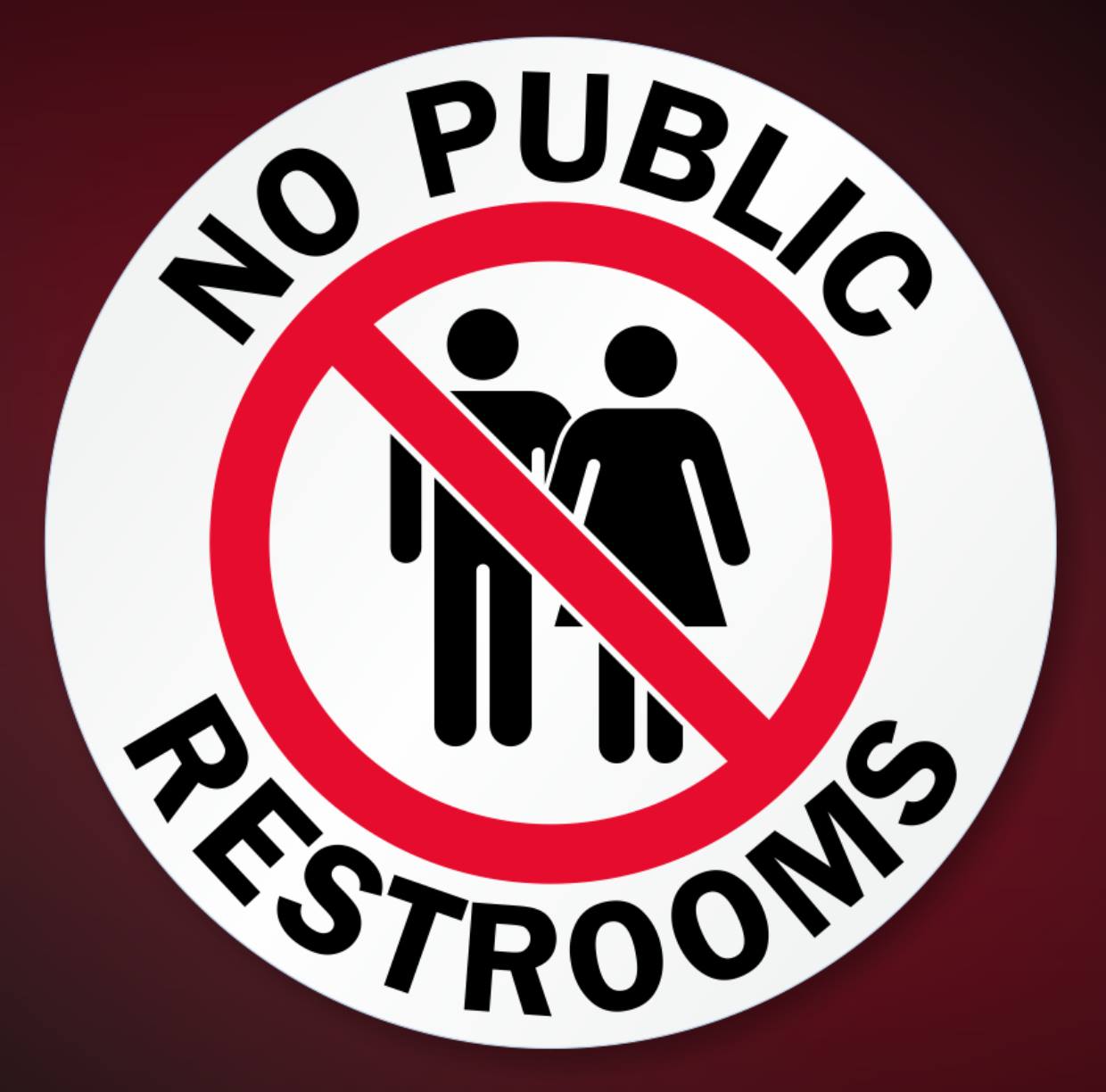Once upon a time, you didn’t need to look far to locate a public restroom in Chicago — especially downtown. You could even find them in CTA stations. But many of those restrooms started disappearing in the 1970s, and these days they’re fairly rare, with libraries and park facilities being among the only reliable options. Now, with libraries and park buildings closed due to COVID-19, and restrooms at retail establishments generally off-limits, many Chicagoans are finding themselves at a loss if they need to make a pit stop during essential activities such as shopping for supplies or exercising.
Like many public policies, this lack of access disproportionately affects women. One expectant mother posted about her experience on Facebook recently. “Because I'm pregnant I need to go to the bathroom, like, all the time,” she said. “Luckily I'm able to work from home, but making decisions about whether I can go grocery shopping or take a trip to the forest preserve to go for a walk are complicated by not having places to pee. All the field houses are closed in the Cook County Forest Preserves, so when going for a walk I've brought my own TP and resorted to squatting in the woods.”
Families — especially those with small children — are contending with this issue as well. Although many businesses allow a child to use a bathroom without expecting the patron to make a purchase, the closure of restaurants and coffee shops for dine-in service means resorting to less-appealing options like gas stations. One parent said she throws a portable “potty” into her bicycle trailer, along with some toilet paper, when she and her four-year-old head out. They also limit how much they drink.
For delivery personnel, the lack of public restrooms is a daily hassle. One mail carrier told Streetsblog that, during non-pandemic times, he usually uses the restroom at day care centers, church offices, museums, bars, and restaurants. But since the pandemic started, he's had a number of incidents where he had trouble finding a restroom when he needed one. Even though his route goes near his parents' house, he can't visit them because of social distancing.
The postal worker said he and other coworkers sometimes are forced to return to the office to use the facilities. Laundromats and gas stations are other options. But he said the current situation is a huge inconvenience because mail carriers are outside the majority of their day, and they have to continuously hydrate and take their lunches on their routes.
Other types of delivery personnel are finding it tough to access bathrooms as well. Even restaurant delivery drivers and bikers, who are constantly going in and out of businesses with restrooms, say they usually aren’t allowed to use bathrooms at the eateries whose food they deliver. According to Helen Clair Duffour, a delivery driver, she and her colleagues have been sharing intel about where to go when nature calls.
“The only places to go are grocery stores, Target, alleys/remote parking lot corners, or pray you’re within driving distance of home,” Duffour said. “My experience with the grocery stores that do have available bathrooms is that it’s you and every other essential employee in the area who had to go. There can be a line. Most that I find and hit up are out of TP as well. I’m assuming it’s from their constant overuse. I carry tissue with me now... I’ve even messaged an alderman about putting up port-a-potties/hand wash stations for essential workers and the homeless… I didn’t get a response.”
And though mobile workers might feel relieved to find a store with toilet paper and no bathroom line, their good fortune can prove problematic for the folks who work there. Store personnel often have to use the same restrooms as visitors, leading one Lowe’s employee to ask that non-employees avoid using the store’s bathrooms. “Ours are maybe cleaned twice a day (they laid off our cleaning staff earlier in the year and use an outside contractor now),” they said. “We don't have staff bathrooms and many employees have 8- to 10-hour shifts. [Sharing bathrooms with the public is] one of many reasons I am terrified of going to work."
Pay-as-you go: pros and cons
So what can we do to encourage some businesses to open their bathrooms to the public? If there were a way to keep the customers socially distanced and maintain safe sanitation, could businesses such as restaurants or bars offer bathrooms with a “pay what you can” policy to help offset their financial losses?
The pay-as-you-go model is common in places like Europe and Latin America, where facilities such as train stations often impose a mandatory fee for using their bathrooms. And, of course, it's common for people in the U.S. to purchase something from a restaurant or cafe in order to be allowed to use the restroom.
However, Americans don't appear to be fans of pay toilets. Only a little more than 50 years ago — in 1968 — a group of four teens students from Dayton, Ohio, who called themselves the Committee to End Pay Toilets in America managed to get pay toilets eliminated all over the country. While their intention was to make it easier to use restrooms, their campaign actually led to the removal of tens of thousands of public bathrooms across the nation. In 1973, the Chicago City Council overwhelmingly voted to ban pay toilets, apparently in response to the CEPTIA campaign, making it the first major city to do so.

But another option is free standalone public bathrooms. Portland, Oregon, introduced its Portland Loo — a standalone bathroom that is free and accessible around the clock — in 2008. Since then, about 20 cities across the United States and Canada, as well as Australia and New Zealand, have also installed Portland Loos. San Francisco, which introduced its Pit Stop mobile public toilets in 2014, has increased the number of staffed public toilets in response to COVID-19 (although the city also has drawn criticism for its lackluster facility maintenance).
The question of disinfection
But if the city of Chicago or businesses offered bathrooms to the public, how would they ensure those restrooms didn’t become new sources of infection? Some research suggests that those who have COVID-19 — even those with no symptoms — can spread the virus via communal bathrooms. And increased public bathroom use could also create more risk of viral exposure for workers who clean the facilities.
Some businesses are exploring measures such as the following:
- Floor-to-ceiling dividers to keep patrons apart from each other
- Removing some toilets and/or sinks so that there's more space between the remaining ones.
- Converting more toilets to automatic-flush toilets
- Touchless soap dispensers
- Automatic water faucets
- Removing or modifying door handles so that people entering and leaving do not need to touch them, or having doors open automatically
- Removing restroom front doors entirely (similar to bathroom entryways in some airports, museums and sports arenas)
- Employing bathroom “monitors” who will limit the number of people in a restroom at one time and ensure that people waiting in line are spaced six feet apart
There’s also a high-tech option: self-cleaning bathrooms. But they come with a hefty price tag. Toronto’s self-cleaning toilets cost about $250,000 each to install. Last summer Los Angeles spent $182,000 to install an ADA-compliant self-cleaning bathroom with two stalls. Even the Portland Loos, which aren’t self-cleaning, cost about $100,000 each without installation or maintenance costs. Let’s face it: Trying to get money earmarked for public bathrooms in Chicago's budget right now, with all the other pandemic- and protest-related expenses, would be practically hopeless.
So for now, those who venture out can consult Charmin’s restroom-finder app, Sit or Squat. Or they can consider the novel idea proposed by one wiseacre, who suggested that those who needed to relieve themselves could do so outside while wearing a cape to guard against prying eyes. Hey, at least it would go with a face mask.




